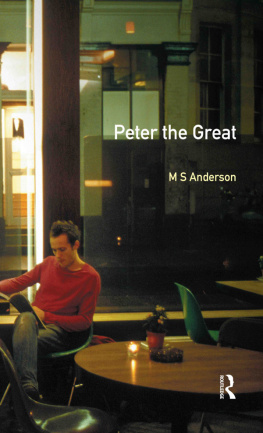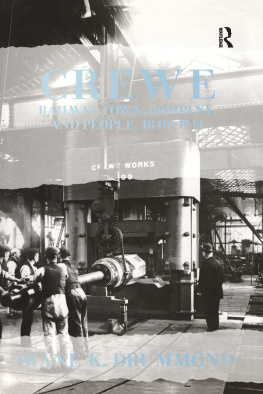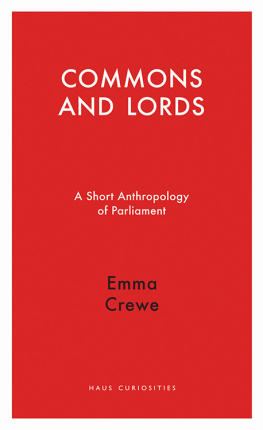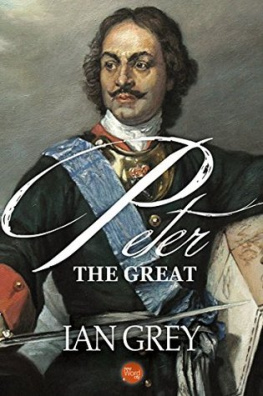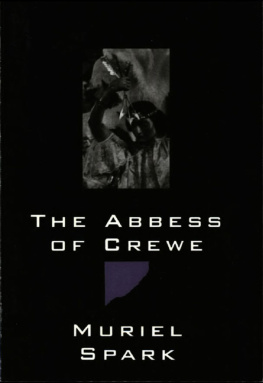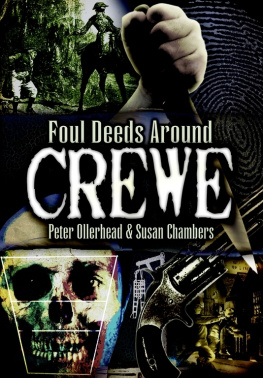Your Towns and Cities in the Great War
Crewe
in the Great War
Your Towns and Cities in the Great War
Crewe
in the Great War
Peter Ollerhead
For Ruth and Jonathan
First published in Great Britain in 2014 by
PEN & SWORD MILITARY
an imprint of
Pen and Sword Books Ltd
47 Church Street
Barnsley
South Yorkshire S70 2AS
Copyright Peter Ollerhead, 2014
ISBN 978 1 78346 341 1
The right of Peter Ollerhead to be identified as the author of this work has been asserted by him in accordance with the Copyright, Designs and Patents Act 1988.
A CIP record for this book is available from the British Library.
All rights reserved. No part of this book may be reproduced or transmitted in any form or by any means, electronic or mechanical including photocopying, recording or by any information storage and retrieval system, without permission from the Publisher in writing.
Printed and bound in England
by CPI Group (UK) Ltd, Croydon, CR0 4YY
Typeset in Times New Roman
Pen & Sword Books Ltd incorporates the imprints of
Pen & Sword Archaeology, Atlas, Aviation, Battleground, Discovery,
Family History, History, Maritime, Military, Naval, Politics, Railways,
Select, Social History, Transport, True Crime, and Claymore Press,
Frontline Books, Leo Cooper, Praetorian Press, Remember When,
Seaforth Publishing and Wharncliffe.
For a complete list of Pen and Sword titles please contact
Pen and Sword Books Limited
47 Church Street, Barnsley, South Yorkshire, S70 2AS, England
E-mail:
Website: www.pen-and-sword.co.uk
Acknowledgements
I am only too thankful that I was born in 1937 and not fifty years earlier in 1887 or else I would have been one of that generation who endured the horrors of the Somme, Passchendaele or one of the other infamous battlefields. I stand in awe and respect at their courage and suffering. Consequently, I thank publishers Pen & Sword for giving me the privilege of recording a few details about the town and people of Crewe during the four years of conflict known then as the Great War. I am especially grateful to Nigel Cave, my editor at Pen & Sword.
The list of local persons to whom I owe a debt of gratitude for their encouragement and help over the years is too long to mention. Some, however, owing to their specific help with this book, must be named; so here they are in no particular order: Harry Jones, Jack Ollerhead, Diane Dyer, Paul Blurton, Brian Kennedy, Andrew Turner, Sylvia Smallwood and Tony Flood, who read the final draft, though all remaining errors are mine and mine alone.
For permission to use photographs or original art work I thank Mary and Colin Maclean; Dorothy Flude; Mick Kelly; Fred Ikin; Darron Back; Adrian Smith; The LNWR Society. The rest are from my own collection.
I gladly acknowledge the assistance offered, mainly on-line, from my local history colleague, Susan Chambers, who, while working on a similar book, was always ready to discuss and help with my queries and problems.
Cheshire East reference library staff at Crewe (especially Mrs Katherine Bate) have been generous with their time displaying cheerfulness and efficiency whenever I made a request for help.
Finally I must thank my wife, Rose, for her devotion and encouragement and my son and daughter, to whom this book is dedicated, for their tolerance and patience when they were young while I selfishly pursued my historical interests.
Prologue
Where is Crewe? I said to the guardian of the iron-gate. Cross the bridge, go straight on and turn to the right, was the concise reply. So I crossed the bridge ... I arrived in Crewe A day at Crewe Chambers Edinburgh Journal 1850 page 91.
CREWE ON THE eve of the Great War was seventy years old, having been planted in the rural acres of Cheshire by the Grand Junction Railway Company in March, 1843. Consequently, it differed from the nearby ancient town of Nantwich, being radical in politics and completely industrial, with a wealth of metal working trades employed on locomotive manufacture and repair. By 1846, it was controlled by the recently formed London and North Western Railway Company (LNWR), which greatly expanded the productive capacity of its workshops. Some idea of the rapid expansion of the embryonic town, into a thriving community, can be gauged by reference to population growth. In sixty years it rose from 4,571 in 1851 to 46, 497, a transformation that dominated the economy of the region.
Indicative of the towns independence was the plethora of religious denominations, many of which had never appeared previously in the region. As people migrated from all over the UK to work for the LNWR they brought the seeds of their religious beliefs with them. Unions organized by the skilled workers, is also indicative of the sturdy independence of this working class town. The need for food and other material goods meant a Co-operative Movement was founded in Crewe, less than a year after the Rochdale pioneers began trading in Lancashire and long before a similar commercial commitment was undertaken by the people of Nantwich. By 1913 Crewe Co-operative Society had over twenty branches stretching out into the surrounding villages such as Willaston, Haslington and Shavington. So successful was the Crewe Co-op that in 1896 it absorbed the Nantwich Industrial Co-operative Society twenty years after its formation.
A one industry town meant that relations between the local officials of the LNWR and the civic leaders could lead to tension as interests were threatened. Water, gas and even education were largely under the control of the railway, though from 1860 a Local Board of Health challenged the paternalism of the railway company. In 1877 local control was further strengthened when Crewe was incorporated into a municipal borough, with a council and a mayor. By 1914 the problems that concerned the civic leaders were the perpetual ones of water, sewage disposal, and the need for houses. Water remained under the control of the railway company until early in the Second World War, when Corporation water began to flow to the town.
What Crewe did possess when war was declared in 1914 was a military tradition, which dated back to at least 1864, when it was agreed at a public meeting to form what eventually became known as the 36th Cheshire Rifle Volunteers. This gave way in 1887 to the 2nd Cheshire Royal Engineer (Railway) Volunteer Corps, established with six companies. Some of the men who enrolled into the Corps served in the South African war with the Boers where twenty-six of them died. Thus it was, when the call to arms came, in 1914, there was ready response from the young men whole heartedly supported, as we shall see, by the rest of the residents of Crewe.
Chapter One
1914 Eager for the Fight
The men are more eager today to see active service than they were fifteen years ago... Crewe Chronicle 8 August 1914
IT SEEMS IMPOSSIBLE for us, living in our time of instantaneous news reporting, to realise that hardly anyone in Crewe, in late July 1914, seemed to be aware that a European war was about to engulf the continent. The






